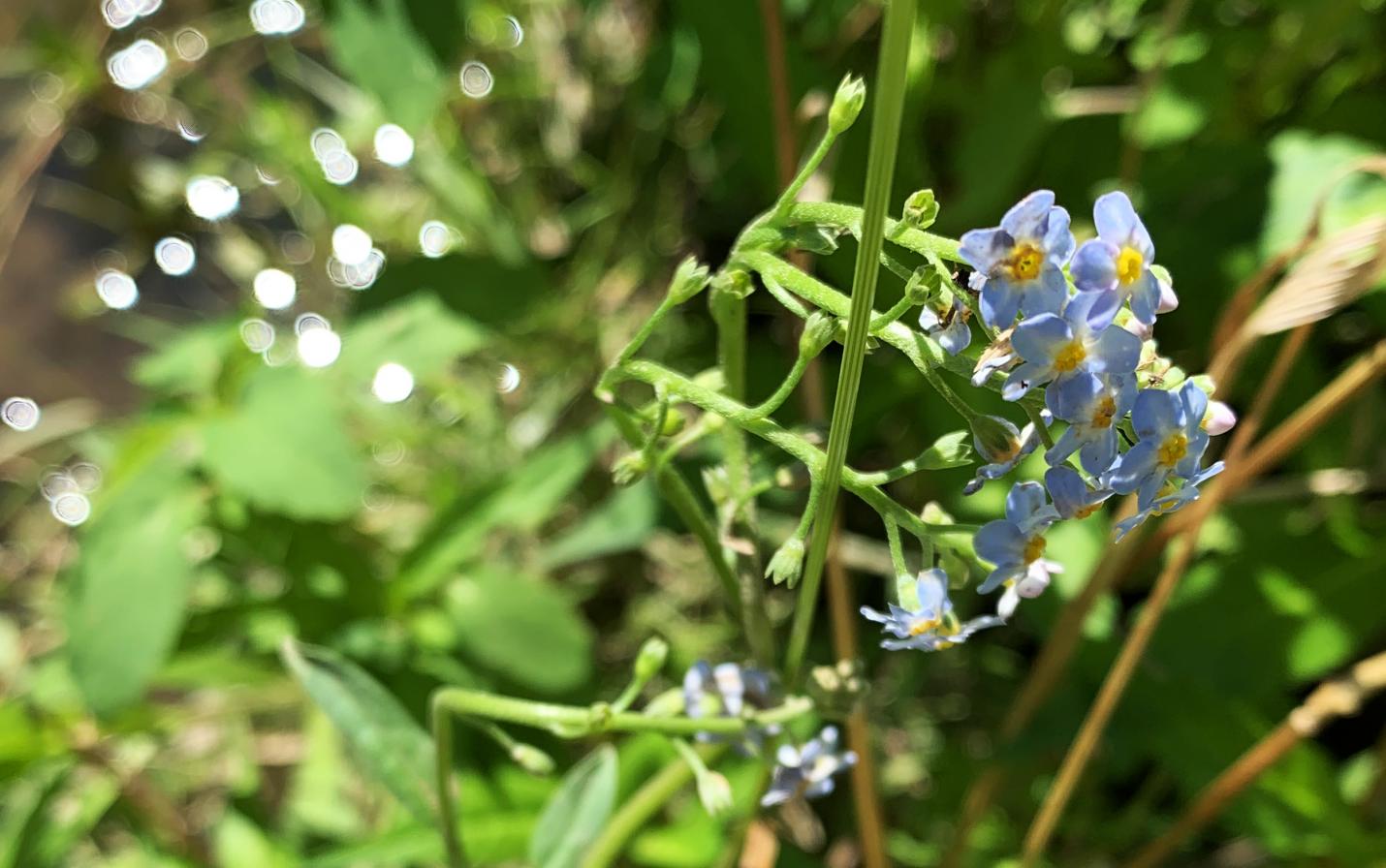
Sometimes I find myself surprised by what a little attention to detail and taking a pretty picture can tell about the resiliency of the habitats Mississippi Valley Conservancy protects. On a recent shiny Friday morning, I happened to be in the Rush Creek watershed visiting one of the private properties we protect. I had already hiked up and found dozens of dew-covered hill prairie plants in bloom, including purple and white prairie clover, hairy gramma, and large amounts of woodland brome.
Next up was Rush Creek, and as I crossed a ripple along the creek I noticed a small pretty bluish-white flower. I forgot about it and just kept on hiking up through the pine relics on the other side of the creek. After I had hike through the rest of the woodlands, I came back down to Rush Creek. As I was crossing another ripple, there they were, the same pretty flowers. I love taking pictures, and have a lot of fun with them so as an afterthought I took a shot of the plant and thought I’d figure out what it was when I got back home.
Later that evening I looked up the pretty little flower, and to my surprise it was a new known record of small forget-me-not (Myosotis laxa) for the county. It is a species of special concern, only known from just over a dozen counties in Wisconsin, and the first known record for Crawford County that I can find. This plant is in the borage family and its habitat is cold clear forested streams. It was in just the perfect place tucked away along a cold-water trout stream nestled right below a pine relic. Aside from this being a cool new find that adds to the known conservation values of the protected property, it also shows the resiliency of this land. Just 3 years ago this valley was inundated with flooding in 2017. Pictures in the previous monitoring report show the damage soon after the flooding, which was extensive throughout the entire floodplain of Rush Creek.
Finding a species of concern, growing in multiple locations, to me shows how resilient these landscapes are to recover just a few years after the damaging floods. It is just one indicator that properties protected by the conservancy are capable of addressing the effects of climate change. It demonstrates that these protected sites can deal with the effects of regular extreme flooding that we have seen over the past two decades, and will continue to do so in the future.
Keeping functional diverse habitats healthy and cared for is one of the fundamental responsibilities that most conservation easement landowners exemplify, and its part of what drives them to conserve their property. I also see this care as part of our climate solution in which more functional habitat is protected and cared for in perpetuity. It may be a tiny little forget-me-not but it can also tell us so much more about the importance of our work. It is gratifying to know we are making a difference, one tiny flower at a time.